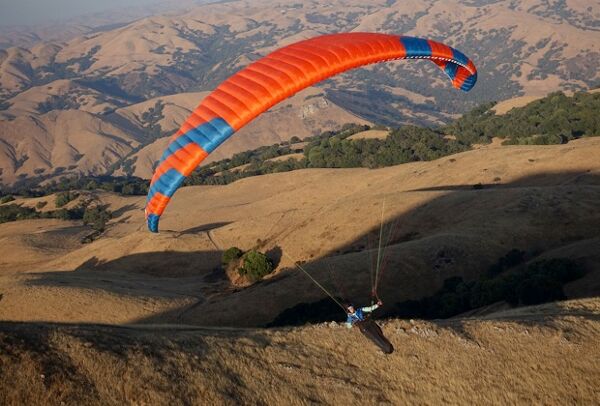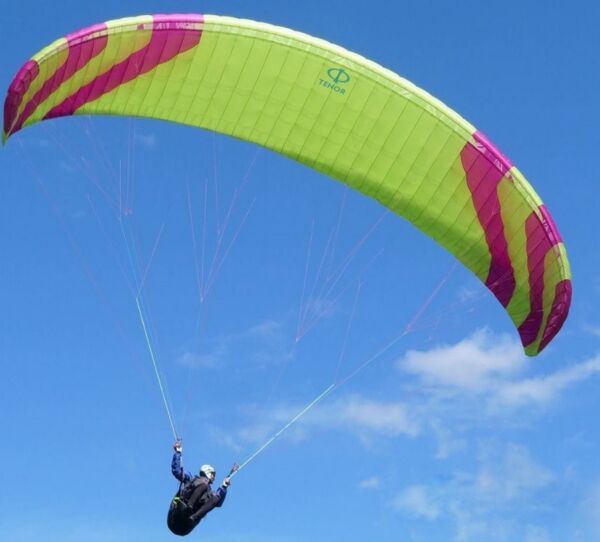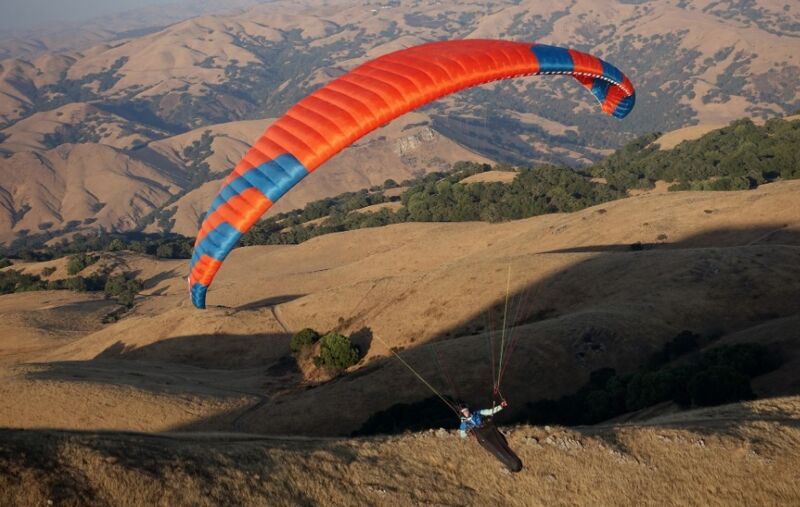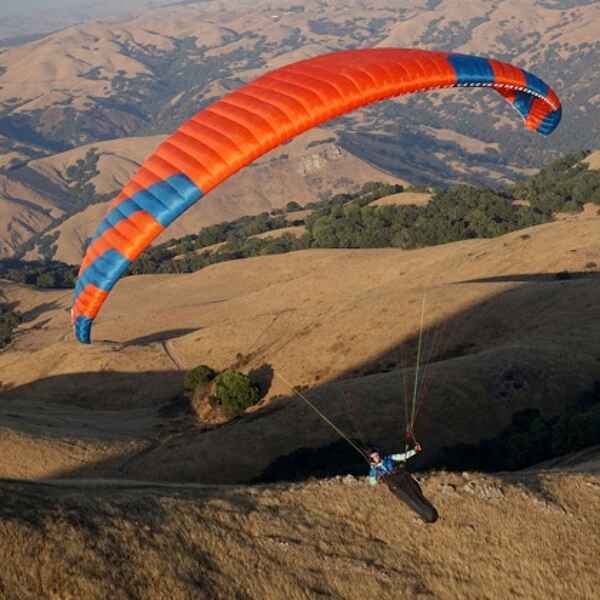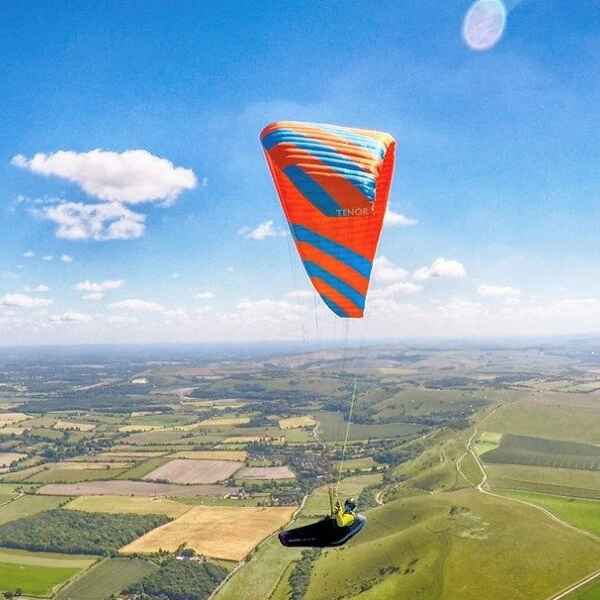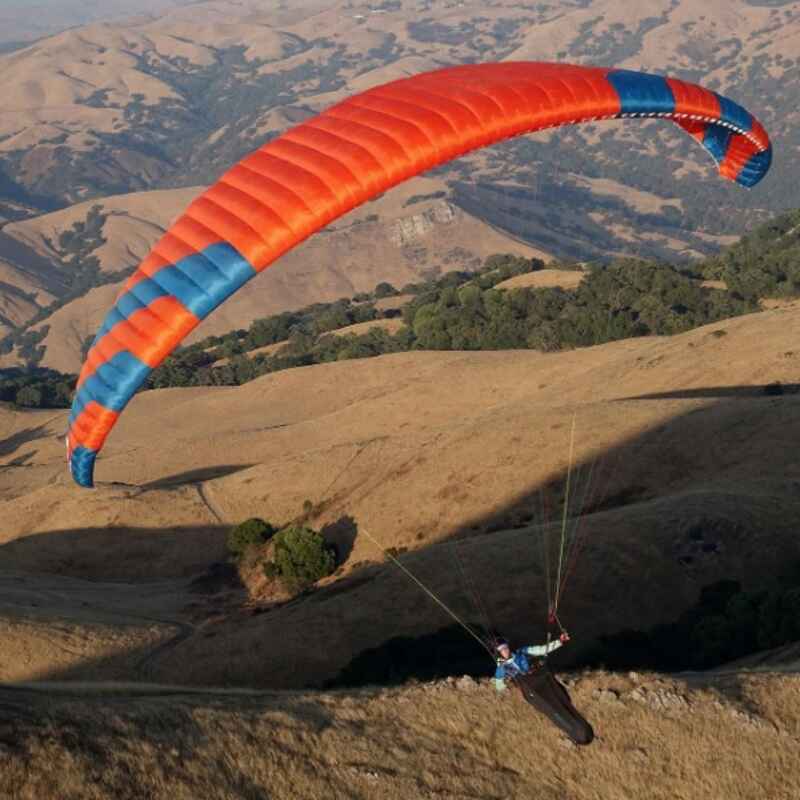PHI TENOR
Ref. #1075
PHI TENOR: Relaxed cross-country flights. The TENOR is a fast, dynamic high performer for a very large target group.
Products and courses cannot be purchased together.
Please complete your purchase or empty your basket before continuing.
Add to basket
was £0.00
from
£3,264.99
€3,885.34Choose below for actual price:
The PHI TENOR
- The TENOR is a Mid-B wing with a very high technical effort. The resulting dynamic performance and the high degree of passive safety set standards. The additional miniribs in the leading edge double the number of cells in the flow-critical area. Together with the optimized zig-zag 3D shaping, a new level of surface quality is realized. The TENOR impresses with its very robust construction (Dominico 30D / 20D cloth, inner minirib seams on the rear edge, additional reinforcements on the profiles).
- A modern interior design minimizes weight. Technical description The TENOR has 50 cells across the entire span, of which five cells each on the Stabilo are designed as closed cells. This build up forms a very form stable and homogeneous wing.
- The profiles used combine high performance with a very forgiving flight behavior. 4 levels of lines on the sail lead to 4 risers on each side. The outermost A lines hang on a separate riser for easy big ears. The suspension system is extremely reduced, which offers a clear buildup and minimizes the line resistance. On the front A riser, the speed system is attached. For better distinction, all A-lines on the maillon rapide are covered and red. The B-lines are green. The stabiloleine on the B-riser red (orange). The C-lines blue. The brake lines yellow.
Safety
- The TENOR is characterized by extremely long brake travels til stall and a very large damping around all axes. The stability in turbulent air is very high. If the wing collapses, the reaction is typical B-class: with no dynamics. The maneuver ratings of B in the EN / LTF tests confirm the large safety margin of this glider. Handling Although the maximum braking travel is very long, the control inputs are short and direct, the brake pressure is low with good progression and excellent feedback. The TENOR can be moved very sensitively and with comparatively small control inputs in thermals.
Performance
- Due to the additional miniribs in the profile nose, the leading edge remains largely stable even in fast flight. Thus, the TENOR offers a very flat polar with an outstanding performance for its class. Target group
- The TENOR is aimed at a very broad group of pilots who want to leave the mountain and go for a cross county flight. The wide speed window makes it possible for the pilot to make good progress against the wind to fly closed tasks. The high level of performance in an accelerated state in moving air predestines the TENOR for ambitious pilots who do not want to do without maximum safety. Pilot requirements A paraglider with the maximum safe classification B does not place high demands on the pilot. Nevertheless, self-evident action is indispensable. In order to fly the TENOR safely, the pilot should have already gained some experience and completed flights in various conditions.
- Each pilot must be able to judge whether his skills and equipment are actually up to the to expect flying conditions! Even with equipment with maximum passive safety, a wrong decision can have devastating consequences! It is solely up to the pilot to avoid such misjudgments by continuing his education in theory and practice, and making his decisions wisely and according to his skills. It is also up to the pilot to use suitable protective equipment and to ensure the constant function of his equipment. Only those who are aware of these principles can practice paragliding safely and enjoyably. Before the first flight
First flight
- Each PHI paraglider must be flown in and inspected by a PHI dealer prior to handout to the customer. This first flight must be entered together with the date and pilot on the type table sheet of the paraglider (in the intake of the middle cell). Registratio In order to be able to use all service and guarantee services, you must register your paraglider on the PHI homepage under SERVICE / REGISTRATION.
Scope of delivery
- The PHI TENOR comes with a pack sack, inner pack sack, packing tape and repair kit.

Modifications to the paraglider
- The specifications on delivery match to those the wing has been certified. Any unauthorized modification (such as changing the length of the lines, changing the riser) will result in a loss of certification! Only the main brake line can be adjusted to a small extent: On the main brake line is a mark where the brake handle is knotted. This setting can be slightly adapted to have sufficient braking distance available in extreme flight situations and when landing, and on the other hand not to constantly pull the brakes, especially in accelerated flight! It is recommended that you take advantage of expert assistance to avoid the wrong setting or wrong knot technique.
- A wrong knot can slip surprisingly (the wing is only very limited steerable), as well as a too short brake line can significantly affect the flight behavior, resulting in the loss of certification. Suitable harness The choice of the harness significantly influences the flight behavior of the TENOR. There are harnesses that allow very effective weight shifting, but also pass on turbulences relatively undamped to the pilot. Less agile harnesses allow no extreme weight shift, 4 but the pilot is less shaken by turbulences. A competent flight school can help with individual expert advice. Legal weight range The TENOR is only approved for operation within a certain weight range. It is the total weight, including pilot, paraglider and harness (and other equipment).
- If the TENOR is flown in the lower half of the legal weight range, reduced agility can be expected. In strong turbulences a lower stability may be noticeable. The reaction on extreme maneuvers is very relaxed. Flying the TENOR in the upper half of the weight range increases the dynamics and stability of the glider. The trim speed increases increases slightly. The dynamic on extreme maneuvers is slightly higher. In flight with the TENOR It is recommended to do the first flights with a new glider in calm conditions to get used to the flight behavior. Also, a few launches on the training hill or ground handling are recommended to get a feel for the wing and its reactions. Start The pilot must make sure that all equipment is in good condition before take-off. In particular, the wing, the harness and the rescue system. The type table must be checked. It is important to make sure that you are in the legal weight range.
- The pilot performs the control look up and makes sure that the wing is completely open above him, with no knots in the lines. The final decision to start has to be made only in the case there are no faults. Otherwise, the start should be stopped immediately for security reasons! The TENOR is characterized by a very simple forward as well as reverse start behaviour. The glider rises constantly without strong forward shooting. Overall, the starting behavior is very simple and forgiving and requires no further knowledge than the standard forward and reverse launch techniques taught in the flight school. Generally it is advisable to practice regularly on the training hill or by ground handling in the wind
Straight on flight
- The TENOR has the best glide performance at trim speed (with fully released brakes). In calm air, the glider is reaching the greatest distance at a given altitude. In headwinds or sinking air masses you fly with maximum glide when you push the accelerator.

Expanding Horizons
- The TENOR is a Mid B wing which sets new standards in dynamic performance, passive safety and aerodynamic construction.The additional mini ribs in the leading edge double the cell number in the critical area of the aerofoil. Together with the optimised double zigzag 3D shaping the surface finish reaches a new level of perfection.Although the TENOR is a very robust wing (Dominico 30D/20D cloth and internal stitching of trailing edge mini ribs), the innovative internal construction reduces the weight effectively.This wing is very stable at speed and has plenty of safety when it’s getting rough: the TENOR is built to expand your horizons.
Tenor Designor Note
- The TENOR is based on the SYMPHONIA, combining a very safe concept with some additional features to improve performance and speed. The additional ribs in the leading edge are the step forward in form stability. The new airfoil is offering a good climbing performance, even the wing being smaller. The reduced size and higher wing loading is moving the polar towards speed performance. So the TENOR is designed to reach the horizon. Hannes Papesh
Technical Data
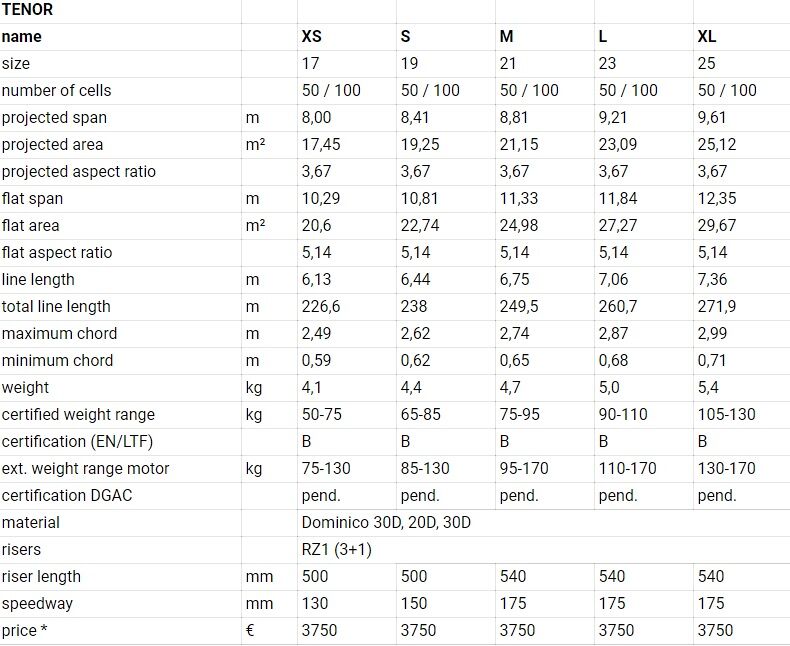
Colours
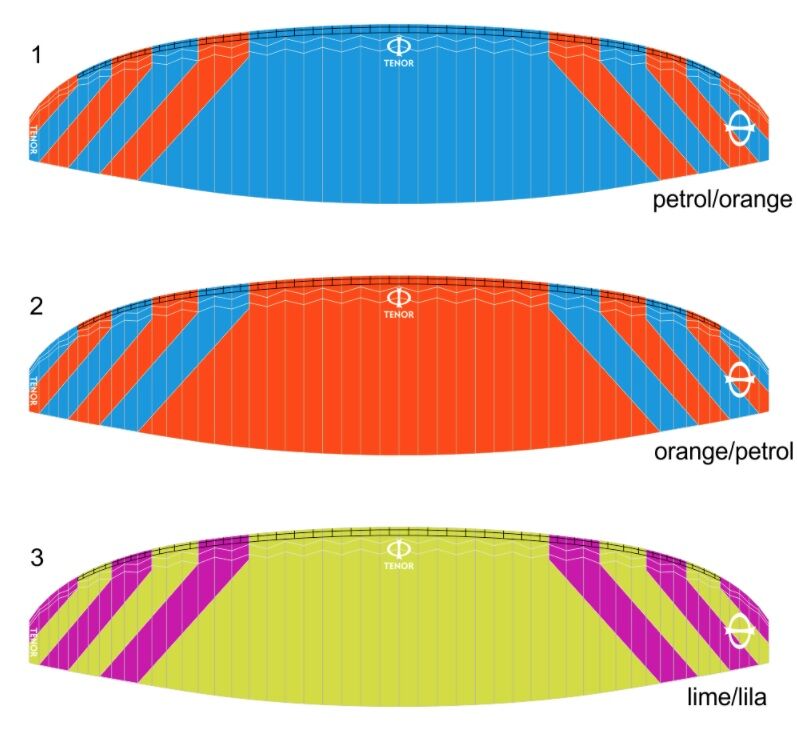
Related
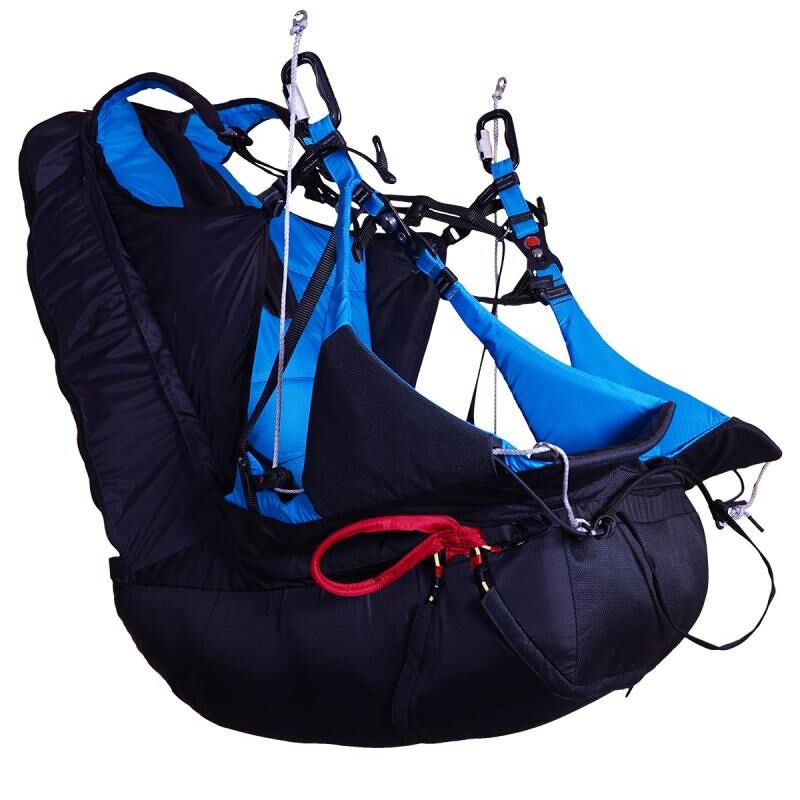
Ozone Switch
From
£849.99
€1,011.49
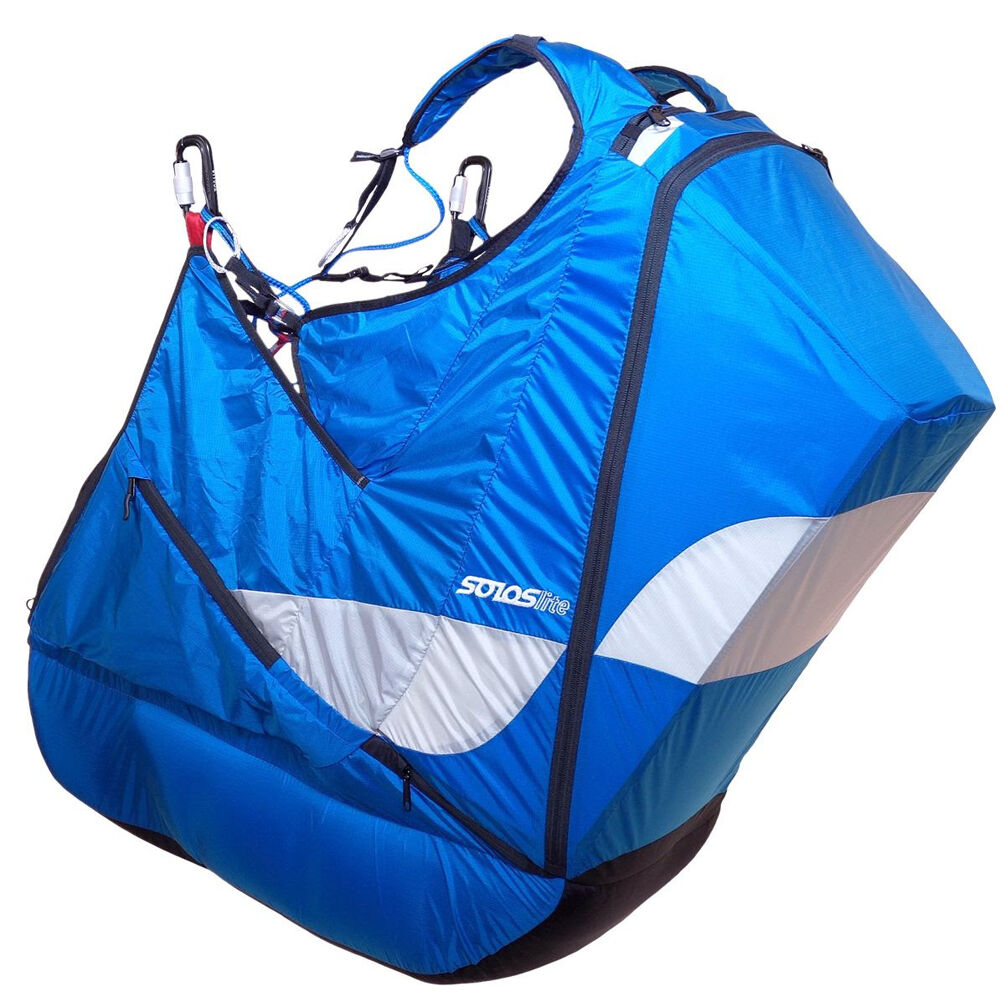
Ozone Solos Lite
From
£999.99
€1,189.99

Supair EVO Lite
From
£759.99
€904.39

